It is the camera of the superlatives, the Zeiss Ikon Contarex, the most complicated camera of all time. 1100 parts are located in the almost 1 kilo housing. A repairman must first remove 43 parts to get inside. No wonder the repair costs more than the almost priceless camera from the last glory years of Zeiss Ikon. Pride comes before the fall.
What a glorious time for Zeiss Ikon in 1958. Let us first do the ‘wikithings’. The Contarex was the first 35mm SLR focal plane shutter camera providing direct meter coupling to the shutter-, aperture-, and film speed-settings; they are interconnected by cords. An aperture simulator for the exposure meter in the Cyclops window uses an iris in front of the selenium meter cell. The meter needle, to be aligned with an index triangle, is visible both in a top plate window and to the right in the viewfinder. A thumb-wheel on the camera controls the lens aperture, and the value is shown in a window on top of the centrally located meter cell (the Cyclops window). The aperture in the interchangeable automatic lens closes when the shutter release is depressed and reopens when the camera is wound on for the next exposure. Due to the limited meter range, not every camera setting combination is possible to accommodate on the Contarex exposure meter. Still with me?
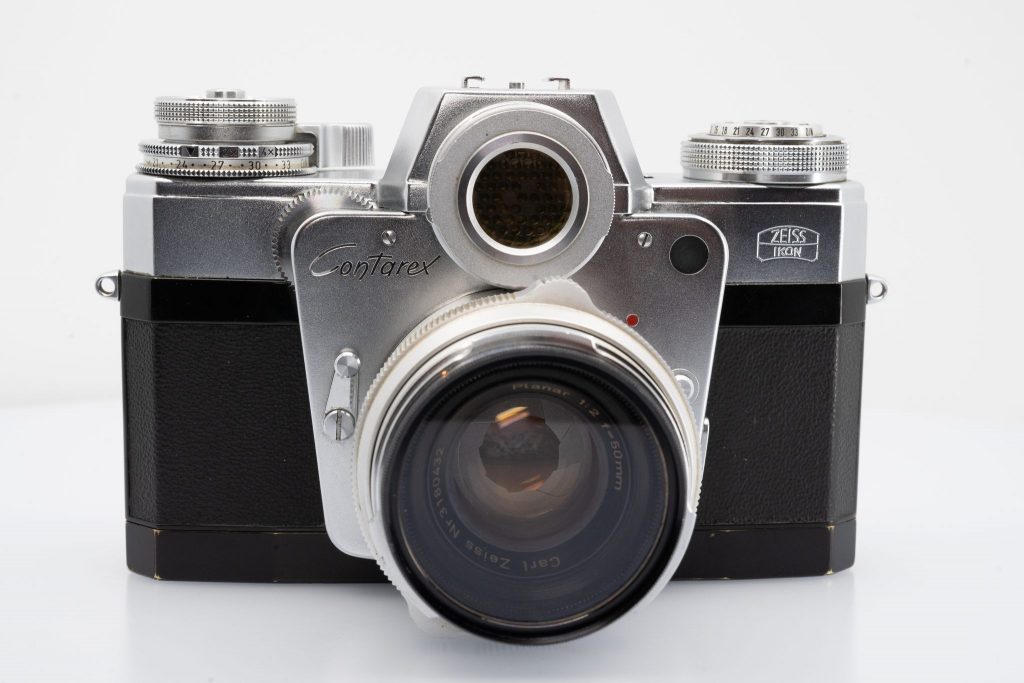
It makes your heart beat faster. Once you have the Contax in your hands. Everything shines, weighs and demands action. Where to start, what to turn first, push, … Let’s start with the left ‘blind’ button. It is striking that for such a fascinating camera no function has been assigned to this large button. You can only indicate color, slide or black and white film on the top setting wheel for your memory. Inside is a retractable handle for rewinding the film. At the bottom of the camera you will find the corresponding unlock button for that. Next to this button we find the exposure meter that does turn off, but due to the drying out of the selenium cells, it is no longer completely reliable. Just like with other cameras of the time. The meter is also mirrored in the viewfinder housing. The viewer is bright and has a circular Fresnel pattern in the middle for exact focussing.

In the middle is the cold shoe for manual flash units. And then comes the magic button, the right shutter tension button, alias wind forward button, alias photo count button, alias shutter speed settings, alias film sensitivity settings. Everything under one and the same button. Imagine having to design that, working exactly and fitting with all mechanical logarithms and hundreds, hundreds of screws, springs, tiny wheels and so on. But what a sound the shutter gives! As if an entire machine comes alive for a fraction of a second. The shutter ring can be rotated between B(ulb) up to 1 / 1000s with 10 different speeds. Lifted, the ring can be adjusted to the film sensitivity (between 10 and 33 DIN, or about 12 to 1600 ASA). But it ain’t easy. The Contarex manual says there are shutter speed locks that change depending on which film speed is set limiting the number of available shutter speeds. A certain DIN sets the range of speeds possible and will lock as it is coupled. You can use all speeds and override the coupled settings by using the colored dot markings.
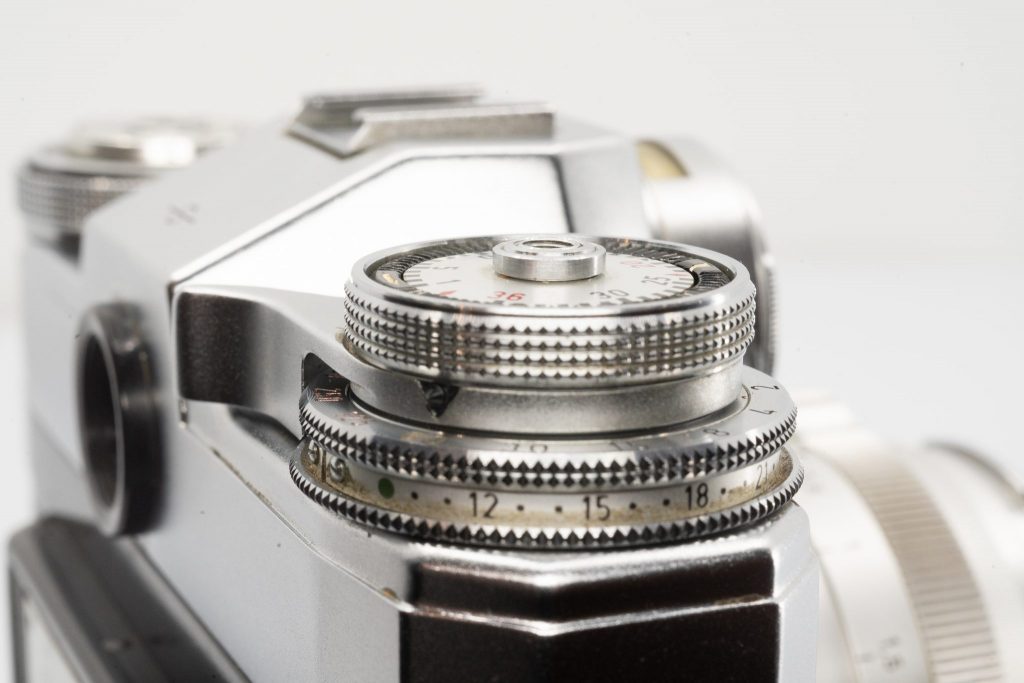
But the magic continues. The aperture is not set on the lens, but via the central control wheel on top of the camera. This is linked to the exposure meter. Light entering the selenium meter is controlled by a 10 blade iris! In the viewfinder you can follow both the depth of field and the (incorrect) exposure values. It is amazing what ingenuity this camera is built with, although the logic quickly escapes the user. It was clear that Zeiss Ikon wanted to prove her technical ability. The exposure meter has a detachable honeycomb diffuser so that a better measurement could be made in difficult or dark lighting conditions. As with manual exposure meter is often found for direct or indirect light metering.
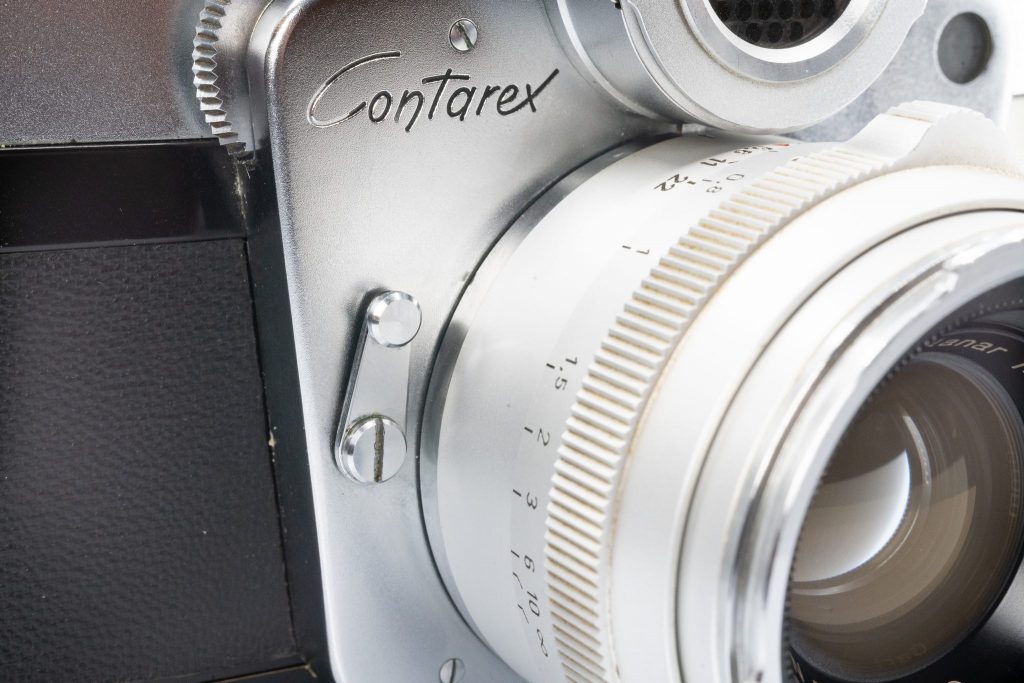
With an expensive camera (DM 1,450 in the early sixties and for your reference a year’s average income in Germany was around DM 5,000) comes an expensive lens, in this case the excellent Zeiss Planar (with nine aperture blades). It used only the best glass possible and a new, by hand finished mount. A great duo and in a special chrome version. The viewfinder allowed you to focus very precisely on the prism circle in the middle. This lens was also able to focus up to 30 cm, a very special achievement for that time. Soon more lens variations were added, partly because the Contarex series was expanded with new models, but not as bombastic as this legendary Bullseye.

Innovations were also made on the back. The Bullseye uses 135 film. The entire back can be taken out due to special interchangeable backs or film cassettes. These backs had a retractable sheet that allowed the back film to be safely removed and changed. You could also turns each cassette’s two little wheels to indicate which film was in. No expense was spared in every detail. The result was the pinnacle of OG German Zeiss Ikon’s engineering. Finally to the left of the lens mount is the self timer lever. Turning this lever counterclockwise as far as it will go, results in an approximate 12 second delay when releasing the shutter. A shorter delay may be set by turning the self-timer lever part way.
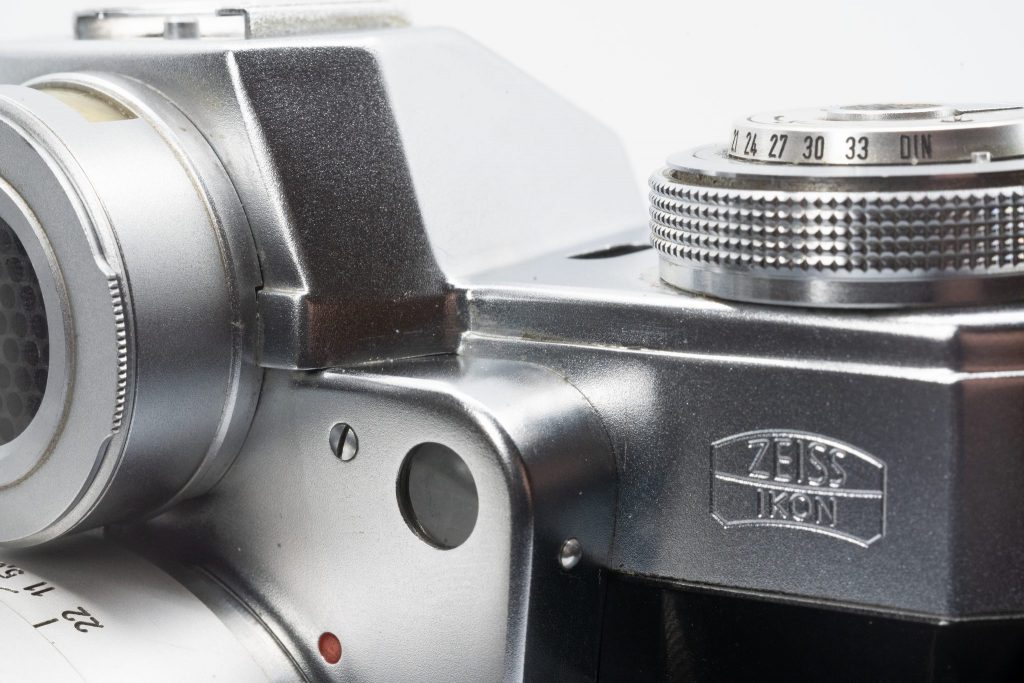
The Contarex was originally designed by Edgar Sauer and is made of very shiny machined metal and is solid as a rock. It required almost 4000 different operations to assemble (mostly by hand). Servicing a Bullseye? Forget about it. Zeiss-Ikon went virtually bankrupt by customers who made use of the guarantee. Disassembling and repairing a Bullseye cost nearly as much as a new one. Even today only a handful mechanics dare to take the time to service a Bullseye. The costs are disproportionate, as is the number of working hours needed for such an adventure into 1100 parts. And who knows today which parts are still replaceable? Mike Eckman already stated that it a fact that many camera shops, even back in the 1960s would refuse to touch them, and today there is hardly anyone left in the world who can repair them. There are even special tools needed to disassemble and disassemble this camera. All that is merely gone. But luckily still there is a detailed website that also offers servicing. Be aware of the costs although.
The Contarex is a very complex camera. First announced at Photokina 1958 in Cologne, Germany, the Contarex generated excitement for it’s gorgeous design and aspirational features. Being a professional camera, the Contarex had a wide selection of accessories available, from bellows to microscope attachments. the Contarex is a very expensive and very desirable camera. From its introduction the camera was already starting to become collector’s items. A custom modified Contarex even was used by astronaut Ed White during the first NASA’s extra vehicular activity (EVA) on June 3, 1965, during the flight of Gemini 4.
But despite its ingenuity, Zeiss Ikon fell short. In this case by the Leica M3 that outsold the Contarex with the Summicron 50mm f/2 for a much lesser price of 1080 DM. But both companies, Zeiss Ikon and Leitz, were unable to stop Japanese innovation. With the introduction of the Nikon F, it was definitely over for the wonderful craft of German quality cameras.
Although this camera is extremely expensive and almost impossible to repair, I just use in the casual way like any other body. Out of respect for its makers, but also for the dad of Luigi, the Italian guy i bought this camera from. I ll take good care for it. But over time I might damage it and that will be the end of it. All good things will come to an end. Till then, the beast will be with me on hopefully many exciting trips.
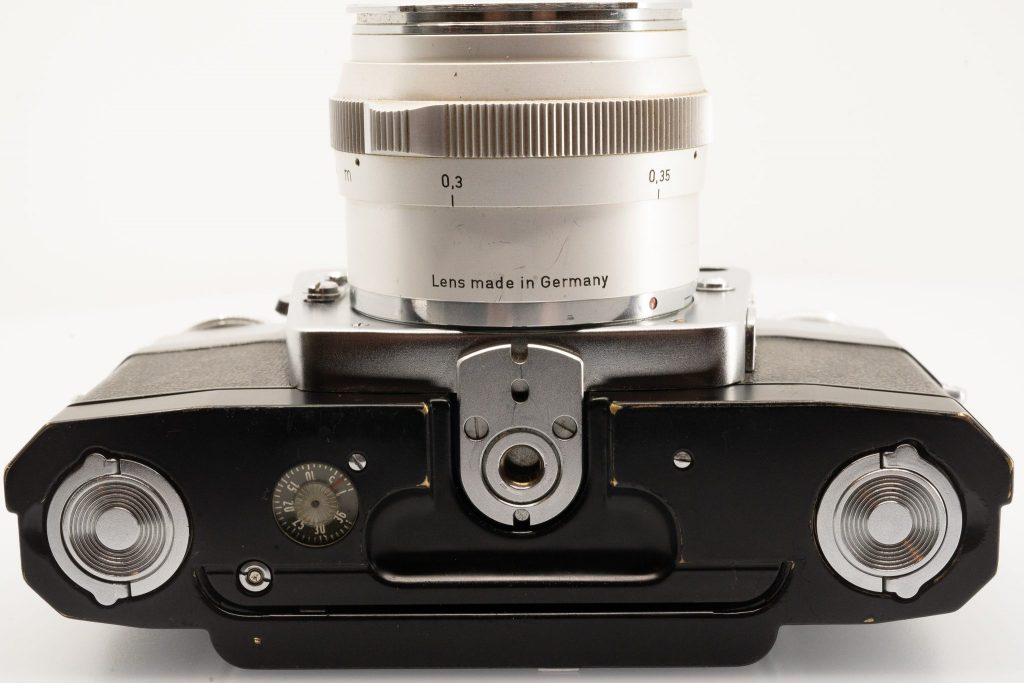
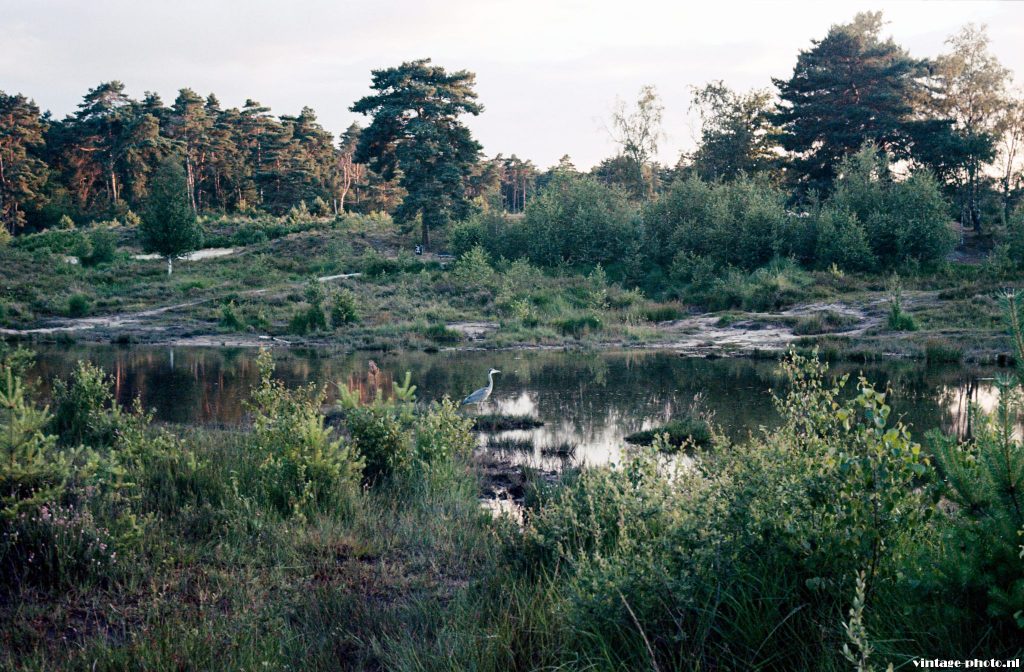
Digitized with Negative Lab Pro v2.1.2 
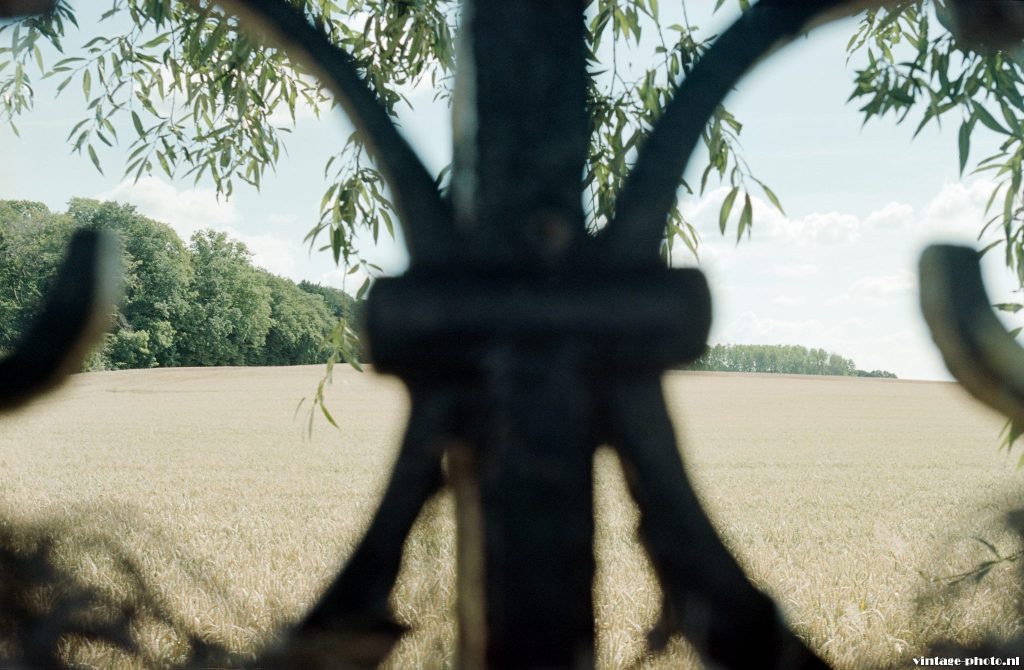


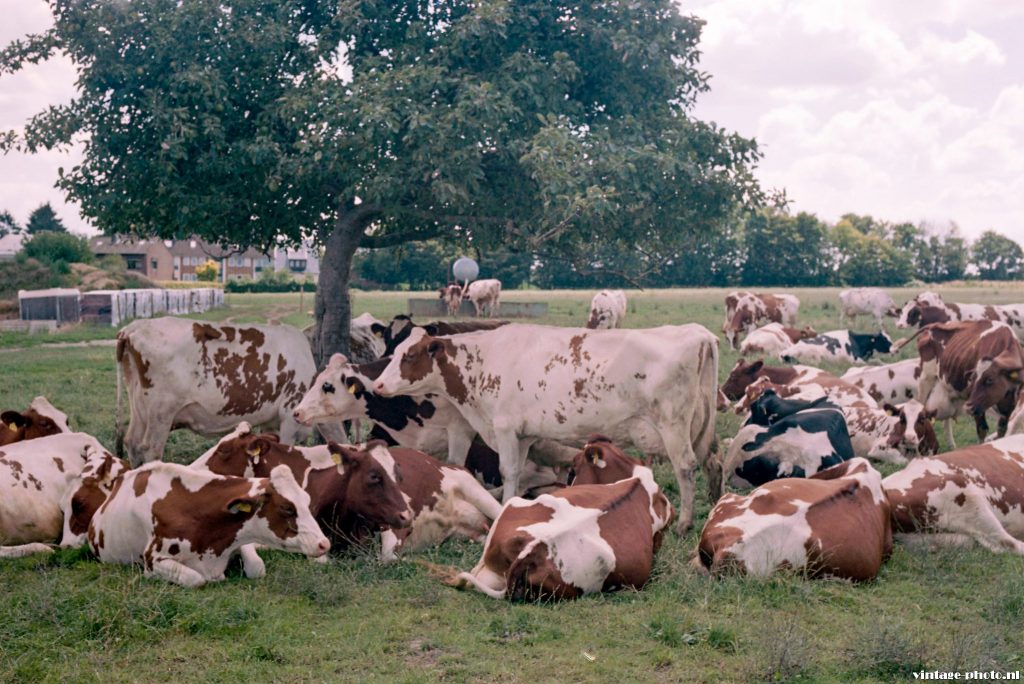
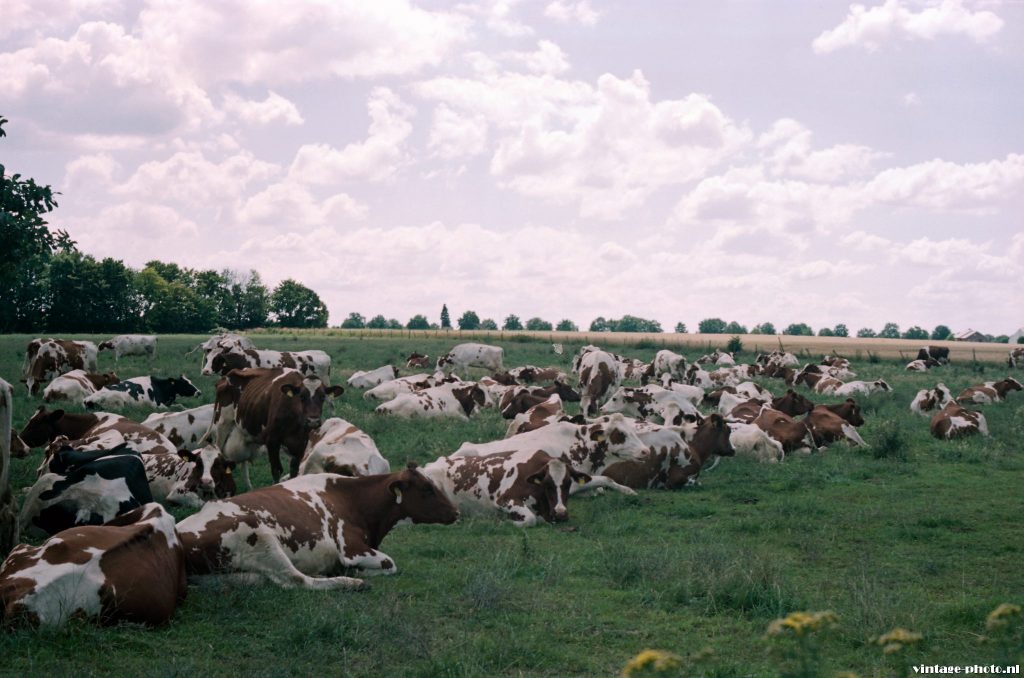




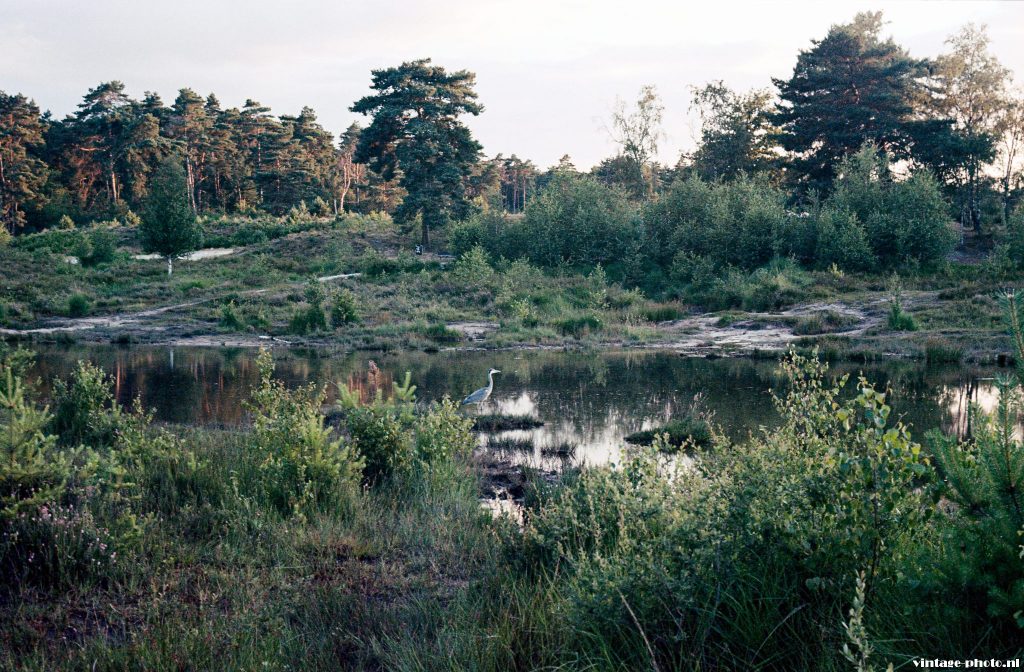


360 degree view of the camera and below the manual and other interesting links for this beautiful camera, a collectors item, but be aware on Ebay to make sure you get a working one!
With thanks to sources from Mike Eckman, who wrote an even nicer and detailed review of the Contarex.
The manual can be found (where else) at Mike Butkus site.



Magnífico artículo!!
La descripción de esta fabulosa máquina es muy completa.
Yo tengo una bulleye ” prácticamente nueva, funciona como Reloj de precisión, tengo dos lentes un 50mm Planar y un 35mm Distagon.
Disfruto muchísimo hacer fotografía artística con esta fabulosa máquina de ingeniería de punta..
Muchas gracias.
Saludos desde México
It was a pleasure to read the article. I’ve recently purchased a Contarex system in a specially designed case. Looks as new as when it came out of the factory. Frustrating, slow and exciting learning curve for me to get confident with this camera. This article confirms the joy and challenges this camera will bring in the future. Thank you so much.
The ‘Zeiss Compendium East and West – 1940 -1945´ dedicates a whole chapter to the Bullseye and its place within the rest of the Contarex range.
The authors of the book write;
‘The Contarex system will remain for many the epitome of the 35mm camera-craftsman’s art, combining over its relatively brief life span the finest elements of mechanical finesse, engineering sophistication, electronic daring, and, most emphatically, optical precision and brilliance, in all senses of the terms.’